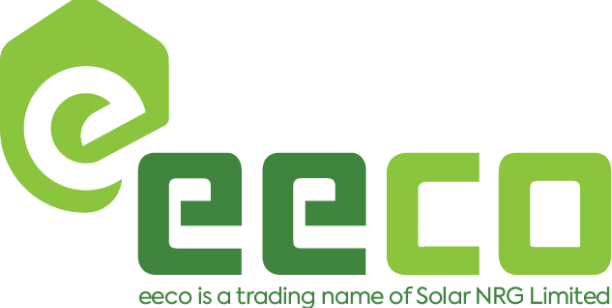The following renewable energy sources have been identified as the most economically practical and environmentally advantageous: Solar, Wind, Geothermal, Coalbed methane, Low-head hydro, and Tidal turbines.
Where does renewable power come from?
Energy derived from renewable sources is regenerated faster than it is used up. More than clean enough, sustainable energy options exist all around us. To protect the world for the next generation is a moral obligation we have safety of these resources. Renewable energy sources such as hydroelectricity, solar, wind, and geothermal are all examples of renewable Energy. Renewable Energy comes from natural, sustainable sources and is often eco- friendly and pristine.
The electrical sector’s greatest renewable source at the present moment is hydropower. These sustainable energy options pose no health risks to human beings. In most cases, they won’t harm the natural world.
According to Wikipedia, renewable Energy is harvested from resources that can renew in a human timeframe.
What are renewable resources?

Solar, wind, waterfall, geothermal, plant materials (biomass), waves, and hydropower are all examples of renewable resources. The long-term viability of our energy supply is an ongoing concern. We must know what sources of Energy can meet our demands. In addition, knowing how long may utilize a given resource is crucial. The term “Renewable Resources” is used to refer to those supplies that can continuously replenish.
Biomass power, hydropower, geothermal power, wind power, and solar power are all examples of renewable resources that may use to generate electricity while reducing pollution levels.
Categories of Renewable Energy

Biomass, hydropower, geothermal, wind, and Sun are the most widely used renewable energy sources.
Biomass is the collective term for all organic materials, including those from animals and plants. Among them are wood, ethanol, and sewage. Corn, like other plants, may absorb ethanol. Grass, trees, and other plant matter soak up the Sun’s rays and store the Energy for later use.
In use for a thousand years, hydropower is one of the oldest renewable sources. Hydroelectricity is common in certain nations. In hydroelectric power plants, water current is used to spin a turbine, generating electricity. A dam or other obstruction may direct water flow from a big reservoir, powering a turbine.
The heat produced in the Earth’s core is harnessed to provide geothermal Energy. These are uncovered either deep below or close to areas of volcanic activity.
Wind power generates electricity by generating rotational motion in wind turbines. The wind propels the blades of the wind turbine. A generator then uses this mechanical Energy to produce electrical current. The Energy produced in this manner may be utilized to power houses and stored in the grid for later use. The wind is a free and abundant source of renewable power.
When it comes to renewable Energy, the Sun is by far the best option. The Sun has the potential to be used as a source of Energy. You could turn this solar energy into electricity by using photovoltaic cells. Getting enough sunlight is crucial.
Future generations will benefit greatly from these tools since they can enjoy a safer and more pleasant environment.
Which renewable energy source is the most reliable and why?
When it comes to alternative energy sources, the wind is by far the most well-known and regarded. The wind is the clear winner when compared to other options. Wind power doesn’t harm the planet.

How does solar Energy convert into clean power?
Life on Earth couldn’t exist without exposure to sunlight. That goes double for the plant and animal kingdom. Nothing grows in the dark. It’s the best Energy for life that can be found on Earth. Without the Sun’s warmth, Earth would perish in winter. The Sun does not expect anything in return.
It may generate Energy from the Sun using solar technology. They do this using photovoltaic (PV) panels or by focusing the Sun’s rays with mirrors. Panels that convert sunlight into electricity are made up of PV solar cells. Sunlight is converted into electricity by solar panels. This Energy aids in the conservation of fossil fuel-generated electricity.
Furthermore, it has positive health and environmental impacts. It’s preferable to install solar panels in the summer when there’s plenty of daylight to power them. Sunlight is required for solar panels to produce Energy.
How can wind power provide eco-friendly electricity?
It’s a gentle way to get people to accept wind power, which is good for the environment and popular. To generate electricity, the wind must first transform the kinetic energy of the moving air into a usable form. The procedure employs turbines, the output of which may be stored in the electrical grid.
It is possible to convert the wind’s kinetic energy into rotational Energy by the movement of the rotor blades. This energy source is eco-friendly and sustainable. In other words, using it won’t diminish the supply. Since the elements always renew the wind, we do not need to worry about exhausting our supply.
Energy from renewable sources against that fossil fuels.
Renewable Energy is sustainable since it draws from natural resources. However, fossil fuels may harm the ecosystem and take years to replace. Energy from renewable sources is preferable to fossil fuels.
Breathing comfortably and maintaining good health are both possible thanks to renewable Energy. With its aid, we can make the planet a more pleasant place to live in from one generation to the next. The supply of renewable Energy can never be depleted, unlike fossil fuels. However, unlike natural Energy, fossil fuel is simple to store. Climate change is irrelevant to the continued use of these fossil fuels. They can provide power whenever it’s required. When sufficient fuel is available, it is content to use electricity. We can’t save wind and sunlight in a vault for later use, so natural Energy isn’t as reliable when it’s not accessible due to climate change.
It’s sad to have to argue that burning fossil fuels causes disease and environmental devastation. Human lungs are particularly vulnerable to the smoke that is being released. Even infants and toddlers are at risk of various illnesses caused by environmental pollution.


